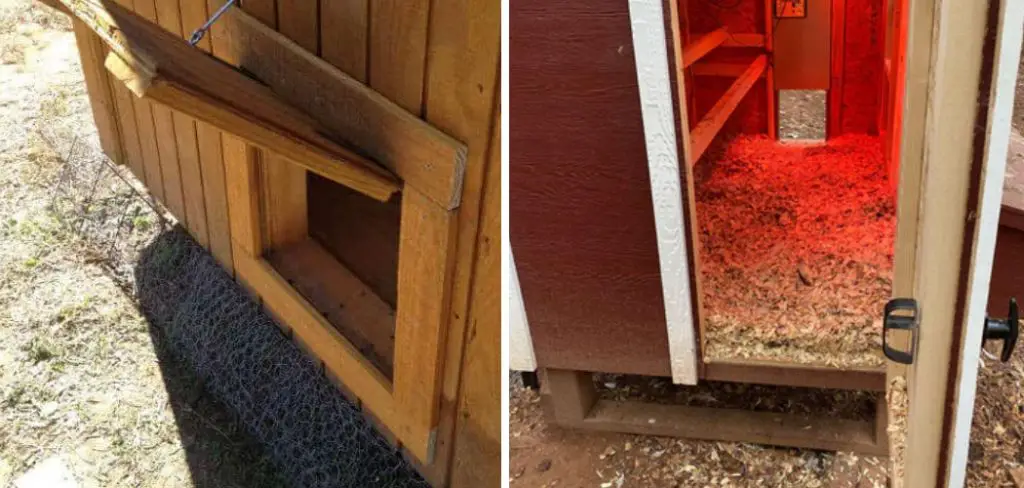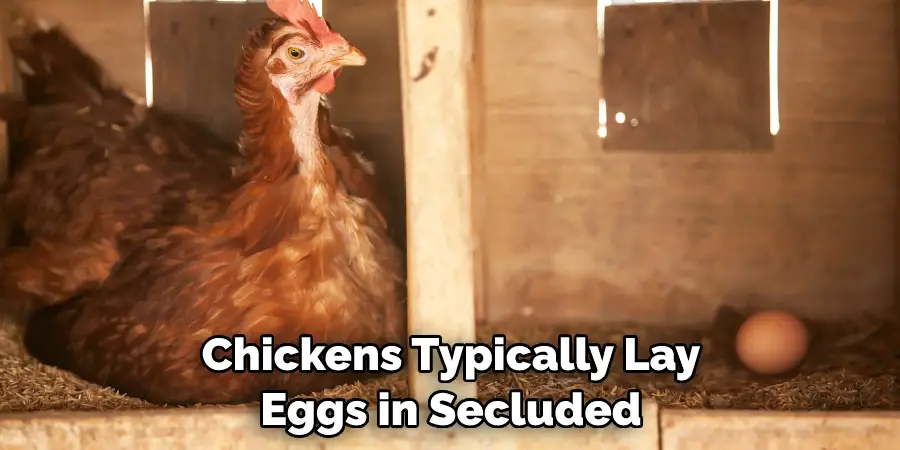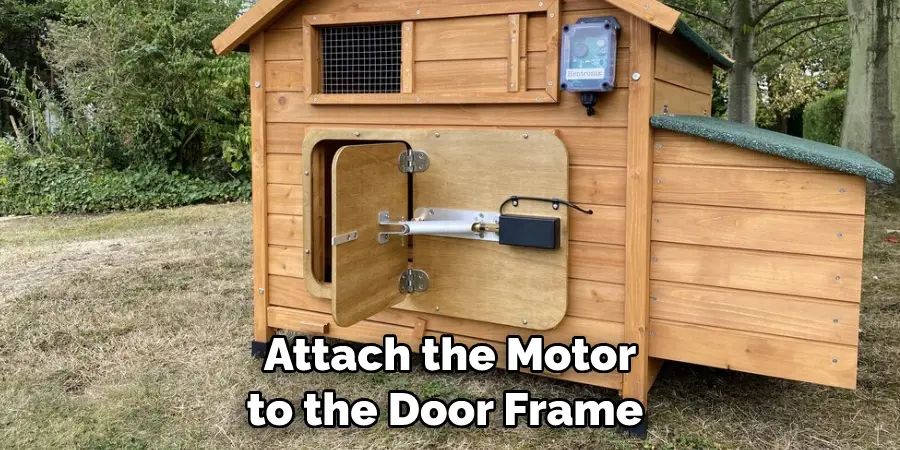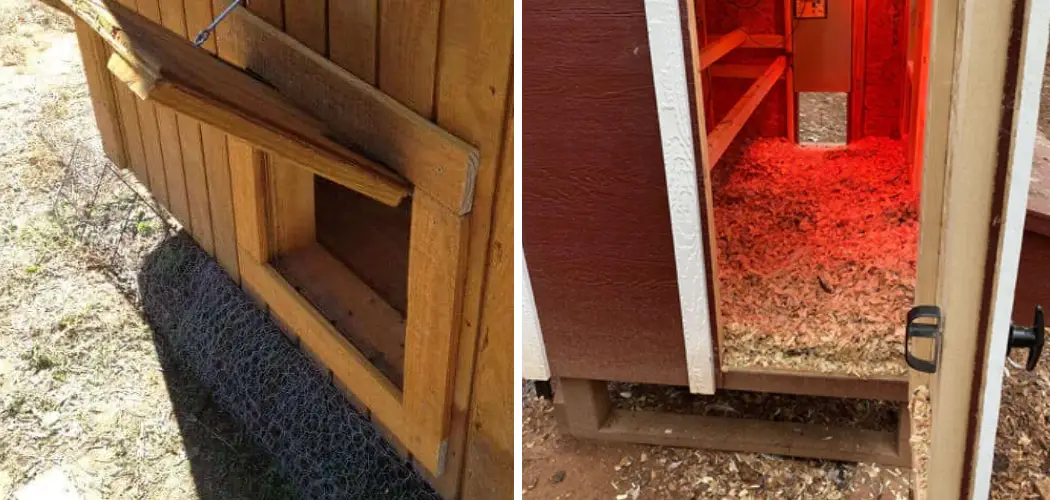Building a chicken coop is an exciting and rewarding endeavor, but one essential component that often gets overlooked is the door. A well-designed chicken coop door not only provides security for your feathered friends but also ensures their safety from predators and adverse weather conditions.

Constructing a sturdy and functional door may seem daunting, but with the right guidance, it can be a straightforward task. In this article, we will explore the step-by-step process of how to build a chicken coop door that is both practical and easy to operate.
From choosing the appropriate materials to assembling the components, we will cover all the necessary considerations to help you create a durable and efficient door for your chicken coop. So, whether you’re a seasoned DIY enthusiast or a beginner, get ready to learn the essentials of crafting a chicken coop door that will keep your flock safe and sound.
What Is the Best Layout for a Chicken Coop?
When building a chicken coop, it’s important to consider the layout carefully. A good chicken coop needs plenty of space for chickens to move around, and should provide a good environment for the birds. To ensure your chickens are happy and healthy, you need to consider the following elements when designing your chicken coop:
1. Floor Space:
The floor space needs be large enough for chickens to move freely and exercise throughout the day. It’s best to choose an area with plenty of clean, dry soil that can be used as a base. This will help keep the chickens’ feet clean and protected from parasites or other potential sources of disease.
2. Ventilation:
A well-ventilated chicken coop will help prevent respiratory diseases in chickens by reducing moisture levels and allowing fresh air in. You’ll want to make sure there are enough windows and vents to keep the air in your chicken coop fresh and clean.
3. Nesting Area:
Chickens typically lay eggs in secluded, dark places. To create a suitable nesting area, you should provide boxes or other structures for them to hide and lay their eggs in. You’ll also want to make sure that these areas are easy to access for collecting eggs.

4. Roosting Area:
All need a place to roost off the ground at night. You’ll want to provide perches or branches so they can rest comfortably and away from predators. Make sure that these areas are made of clean, untreated wood that won’t splinter and harm your chickens.
Once you’ve considered all of these elements, it’s time to start designing your chicken coop door. A secure and well-crafted door is essential for keeping predators away from your chickens while allowing them access to food and water. A good chicken coop door will be made of durable materials that can withstand frequent use and the elements.
10 Methods How to Build a Chicken Coop Door
1. Basic Hinged Door
This method covers the construction of a simple hinged door using basic materials such as plywood and lumber. It includes step-by-step instructions on measuring, cutting, and assembling the door frame, attaching the plywood panel, and installing the hinges and latch.
If desired, a door handle can also be added to the project. Although this method is straightforward, it does require some basic carpentry knowledge and tools.
2. Sliding Door
For those with limited space or specific design preferences, a sliding door can be a great option. This method explains how to build a sliding door system using tracks and rollers, including detailed instructions on constructing the door frame, installing the tracks, and securing the door panels.
To get started, measure and cut the pieces of wood needed for the door frame. This should include two vertical pieces at the sides, a top piece that acts as the header, and a bottom piece. Secure all pieces with nails or screws and make sure that the frame is square.

Next, attach the tracks running along the top and bottom of the frame, securing them with screws. After that, measure and cut the door panel pieces to size and then attach the rollers to the inside of each panel. Finally, hang and secure the door panel in place on the tracks.
3. Automatic Door Opener
An automatic door opener can provide convenience and peace of mind, especially for those who cannot manually open and close the coop door daily. This method guides you through the process of building an automatic door opener system using a motor, pulleys, and a timer, along with instructions for wiring and installation.
If you’re up for the challenge, this one-of-a-kind solution might be perfect for your needs! However, remember to seek expert advice if you are not confident about the job.
4. Solar-Powered Door Opener
If you’re looking for an environmentally friendly and cost-effective solution, a solar-powered door opener is an excellent choice. This method outlines the steps to create a solar-powered system, including the installation of solar panels, batteries, and a motor, as well as wiring and programming instructions.
First, purchase the necessary parts such as solar panels, batteries and a motor. Then, secure the solar panels to the roof of your chicken coop, making sure to angle them in the right direction and seal any entry points with caulk or silicon.
Next, connect the batteries to your solar panels and run the wire to your motor. Attach the motor to the door frame of your chicken coop and program it to open at certain times of day. Finally, cover the motor and wiring system with a protective material like plastic to protect it from weather damage.

5. Vertical Sliding Door
A vertical sliding door is a space-saving option that works well for small coops. This method provides detailed instructions on building a vertical sliding door, including constructing the frame, installing the sliding mechanism, and ensuring smooth operation. While this design requires more skill, it is the most reliable of the four designs recommended.
To build the frame, cut two pieces of 2×4 wood to length, measuring from the top of your coop door opening down. Drill pocket holes into each end of the two pieces, then secure them together with 2 1/2-inch pocket screws. Make sure to use a countersink bit to provide a flush finish. Next, attach the two pieces of wood you just cut to the top and bottom edges of your door opening.
6. Pneumatic Door Opener
For a more advanced option, a pneumatic door opener uses air pressure to control the opening and closing of the door. This method covers the construction of a pneumatic system, including assembling the components, connecting the air supply, and adjusting the opening and closing parameters.
Once all the components are in place, attach them to the coop door. Connect a compression fitting and air hose from the pneumatic door opener to the air supply. Be sure to secure any loose wires and hoses with cable ties or zip ties. This will help ensure the system is safe and secure.
7. Guillotine Door
A guillotine door is a unique and visually appealing option that moves up and down vertically. This method explains how to build a guillotine door, including constructing the frame, attaching the door panel, installing the pulley system, and ensuring proper balance and operation.

While the instructions here are for a guillotine door, it is possible to this plan to create other types of automatic doors. However, the guillotine door is a great option for anyone looking for a chicken coop access with automatic features.
8. Wire Mesh Door
A wire mesh door allows for proper ventilation while still providing security for the coop. This method guides you through the process of building a wire mesh door, including constructing the frame, attaching the wire mesh panels, and adding a latch for easy access.
If you choose to use this method, make sure the mesh is strong and has a small enough opening that predators can’t get through. Try to use a mesh that is rust-resistant and strong enough to survive all types of weather.
9. Dutch Door
A Dutch door offers the flexibility of opening only the top or bottom section while keeping the other portion closed. This method covers the construction of a Dutch door, including framing the door, installing the hinges, and adding a latch mechanism. While more complicated than a sliding door, this method offers an attractive option that is sure to add style security to your coop. Once the door is constructed, it can be painted to match the rest of your coop.
10. Recycled Materials Door
If you’re looking for a budget-friendly and sustainable option, this method focuses on utilizing recycled materials to build a functional chicken coop door. It provides ideas and suggestions on repurposing items such as old windows, pallets, or salvaged wood to create a unique and eco-friendly door.
Conclusion
Building a chicken coop door is no small feat, but with the right tools, supplies, and know-how, it can be done by even the most novice DIYer. Installing your own chicken door can provide several benefits for both you and your chickens. It’ll allow you to keep track of their activities from afar and give chickens safer access to food, water, and nesting boxes.
Furthermore, designing and building a custom one-size-fits-all solution allows you to create something that perfectly fits the size and shape of your coop. With this newfound knowledge on how to build a chicken coop door, you are now equipped with the skills necessary to install one yourself. So don’t wait any longer – get out there and start building today!

